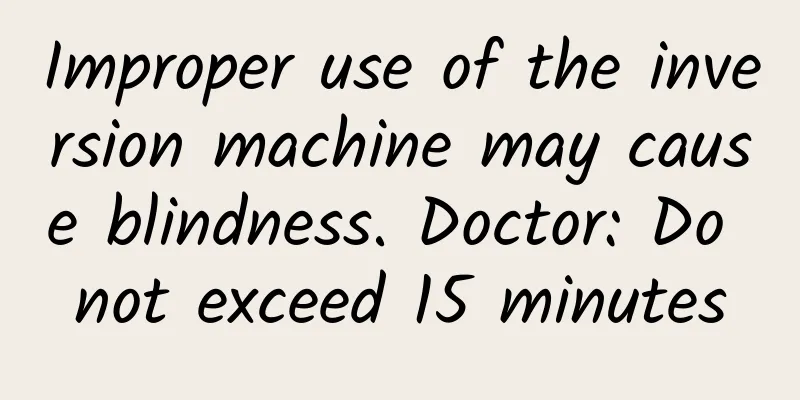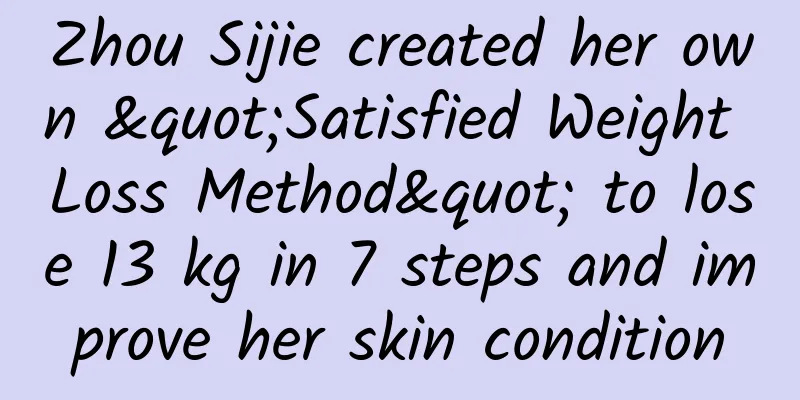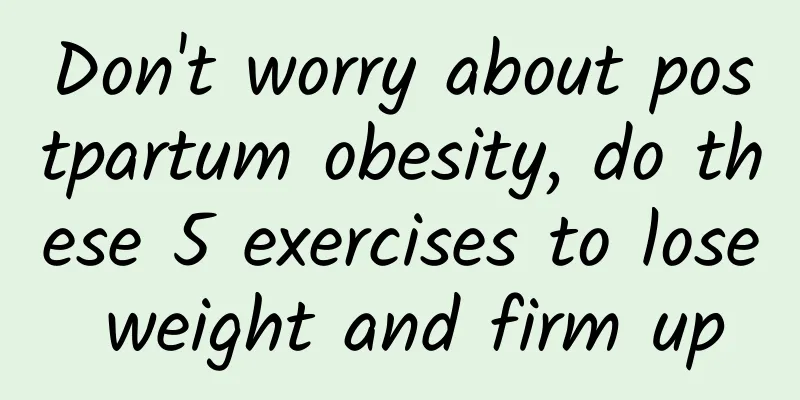Improper use of the inversion machine may cause blindness. Doctor: Do not exceed 15 minutes

|
Modern people live under great pressure, have bad postures, and often suffer from back pain. Many people follow the trend of exercise and buy inversion machines to use at home to relieve muscle and bone discomfort. However, be careful that improper use of the inversion machine may cause blindness. Doctors remind people that they should consult a professional doctor before using the inversion machine, and the inversion time should not exceed 15 minutes each time. People with glaucoma and peripheral retinal degeneration should not use the inversion machine to avoid accelerating the deterioration of eye diseases, which may lead to blindness in severe cases. A man who was doing sit-ups on an inverted machine had high eye pressure and was in danger of going blind Lyu Dawen, director of the ophthalmology department of the Tri-Service General Hospital, recently admitted a 30-year-old man with a history of hypertension. In order to relax his back muscles, he bought a handstand machine to use at home. He also practiced sit-ups while doing handstands. Unexpectedly, after using it twice, he suddenly felt blurred vision in his right eye and even had floaters. An eye examination revealed that the central retinal vein collaterals were ruptured and microvascular bleeding spread to the vitreous body. He almost went blind. Fortunately, he was finally able to recover his vision with medication. Dr. Lu Dawen said that inversion will cause blood to flow backward instantly, leading to increased blood pressure, brain pressure and intraocular pressure, while sit-ups will increase abdominal pressure. Therefore, when doing sit-ups on an inversion machine, the venous return rate will be accelerated, blood pressure and intraocular pressure will be higher, and the risk of ruptured blood vessels in the eye and bleeding, and even blindness, will be higher. Don't stand on your head for more than 15 minutes. High-risk groups should avoid it. Headstand is also a common stress-relieving move in yoga. It is not completely impossible to do it, but healthy people should not stand on their heads for more than 15 minutes. If symptoms such as dizziness, blurred vision, and brain swelling occur, it means that the body has reached its limit and should stop immediately. In addition, if you have eye diseases, three high diseases, diabetes, heart disease, osteoporosis, or spinal diseases, inversion poses a greater risk to your health. It is best not to use an inversion machine. If necessary, consult a professional medical staff before using it. Dr. Lu Dawen said that in terms of eye diseases, for patients with glaucoma, standing upside down will cause intraocular pressure to rise faster, aggravating the eye disease; for people with retinal disease or peripheral retinal degeneration, once standing upside down, the changes in eye pressure and gravity may cause the vitreous body to involve the retina, which may lead to retinal detachment and blindness in severe cases. Headstand may not necessarily relieve back pain. Improper movements may even worsen spinal diseases, so you must be careful. Inversion machine ≠ relieve pain, stretching exercise is safer and more effective Physical therapist Fang Liting said that patients with high blood pressure are at risk of blindness and stroke when doing handstands; patients with low blood pressure will quickly stand upright after doing handstands and repeat the action, which will cause their blood pressure to fluctuate and easily lead to dizziness and fainting. As for improving back pain, physiotherapist Fang Liting mentioned that although using an inversion machine can relax the muscles and reduce spinal pressure, it "may" relieve the pain caused by a herniated disc or spondylolisthesis, the inversion process may still damage the spinal joints due to incorrect movements or too fast movements. In addition, if the low back pain is caused by sticking of the facet joints of the spine, it cannot be relieved by doing a handstand. Physiotherapist Fang Liting emphasized that "handstand" has never been a formal physical therapy method. If you want to relieve pain, stretching and extension exercises can have a good relief effect. It is not recommended for people to use handstand, especially for the elderly over 50 years old, who have poor adaptability to changes in posture and are more likely to be dizzy, fall, and even suffer from fractures. |
<<: How to eat sugar to lose weight? Master these three principles to avoid gaining weight
>>: No need for PS when taking photos! Amino Acids Help You Fix Lines
Recommend
Chronic adnexitis may cause tender masses
Adnexitis can be divided into chronic adnexitis a...
How much does endometrial tuberculosis surgery cost?
Endometrial tuberculosis is the most common disea...
What are the causes of irregular menstruation?
Many women suffer from irregular menstruation, bu...
Diet therapy for dysmenorrhea
Dysmenorrhea is very serious for women. Some wome...
What are the clinical manifestations of dysfunctional uterine bleeding?
If it is anovulatory functional uterine bleeding,...
Can cervical warts be completely cured?
Cervical warts are a sexually transmitted disease...
Can I get pregnant if I don't have my period in March?
There is a chance of pregnancy if you haven't...
Let's take a look at the four major factors that cause dysmenorrhea in women
Everyone has heard of dysmenorrhea. But how much ...
What can't I eat if I have uterine fibroids? Can patients with uterine fibroids take birth control pills?
What can't you eat for uterine fibroids? We m...
Tips: Treatment measures for primary dysmenorrhea
With the acceleration of the pace of modern life,...
Peanuts have many benefits! Can eating peanut butter help you lose weight? Teach you how to eat peanuts
Peanuts have many benefits! Eating peanuts not on...
What are the early symptoms of ovarian cysts?
Do you know about ovarian cysts? How much do you ...
Abnormal vaginal discharge similar to nasal discharge
Abnormal leucorrhea that is like nasal discharge ...
What is the Chinese medicine for regulating uterine fibroids? Chinese medicine formula for regulating uterine fibroids
What is the Chinese medicine for regulating uteri...
What can't you eat if you have uterine fibroids?
Patients with uterine fibroids should avoid hormo...









